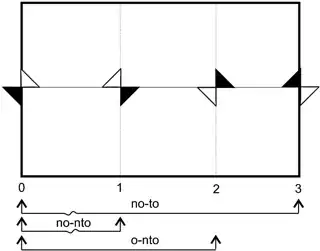In the context of Lorentzian manifolds, we can define time orientability and space orientability as follows:
Time orientability: A Lorentzian manifold $(M,g_{ab})$ is time orientable if and only if there exists a continuous non-vanishing timelike vector field on $M$.
Space orientability: A Lorentzian manifold $(M,g_{ab})$ is space orientable if and only if there exists a continuous non-vanishing field of orthonormal triads of spacelike vectors on $M$.
My question is: are these two notions independent of one another? It's easy to think of cases where one property is messed up (e.g. by discontinuously turning the light cones), but then it seems that the other property is also messed up.
